This essay is the second in a series comprising Rolodex Dreams; How They Arise; Headful and Life with the Snippets
It’s got to the point now where just about everything I think reminds me of something else.
But that’s what thinking is. An unbroken stream the successive components of which are invariably linked to each other in some way.
While the stream is ‘unbroken’ insofar as thinking is incessant it will, of course, be constantly interrupted by events in the world. The stream will register events, which give rise to associations, some of which are ignored (not without being registered however fleetingly) and some of which are awarded status. Events will reroute any apparent direction being taken by the thought stream prior to their impingement. The continuous flow of thought is, nevertheless, maintained.
So the phrase ‘reminds me’ in my opening sentence is intended to distinguish between an everyday flow of thoughts enhanced by an apparent sense of connection and the same thing comprised of apparently disjointed fragments. The former would be based on sequences of memories in which one thought brings to mind another thought that has characteristics or qualities in common with its precursor. The connected thoughts have the distinction of remaining ’on topic’ for a period of time while those that do not readily reveal their connections may be seen as in some sense homeless.
The idea of sequenced thoughts having something ‘in common’ suggests a connection that is readily recognised. It may also be that apparently random thoughts are, at times, actually connected to their precursors but these connections are not recognised. When this happens the subject may assume that there are no connections to be found and this, in turn, encourages the ‘randomist’ school of thought, which is essentially anti-psychological and consistent with dominant cultural tendencies.
It would be wrong to imagine that ‘in common’ can only refer to similarities that fall within the classes of topics presented by the thought that appeared to initiate inspection. If I find myself thinking about butterflies I may well be reminded about other butterflycentric events or observations but I may equally entertain thoughts that have scarcely any explicit butterfly content. The original thought, which is only ‘original’ for the sake of this argument, also has its predecessors, none of which may have had butterfly content but did contain elements that provoked the subsequent emergence of the butterfly topic.
It may be, for example, that the brief sight of a receding number 43 bus makes one think about butterflies. If a granular inspection of links between the bus and the butterfly were carried out (How would you even begin?) it is conceivable that microlinks could become apparent. Or not.
My opening statement suggests that there is something noteworthy in thinking things then finding that these thoughts conjure further thoughts. This may simply be a description of all thinking processes. The reason such a bald assertion is resisted may be because when we think ‘What on earth is the connection between what I thought two moments ago and the thought I had one moment ago?’ we assume that the apparent absence of connection means there is no connection – ‘That’s the way the mind is, it just throws up thoughts at random.’
Much of the above implies that thoughts can be seen as discrete events that have a beginning and an end. It is likely that if it were possible to replay a ‘thought’ in slow motion it would be seen to contain a number of associated elements, each of which also deserves to be designated as a thought.
It would be a mistake to muse overlong on perceived similarities between files stored on a computer hard disk and memories stored in some way in the mind. Digital files are inert. Memories/thoughts/experiences stored in the mind carry a charge. That is why they are stored. Perhaps only 1% of them are ever called forward. Perhaps every single one of them exerts an influence. Perhaps they are never ‘turned off’ and therefore always inform the subject’s mental life, if imperceptibly.
On the other hand if the borders of each thought were barely distinguishable then perhaps all mental activity during waking hours should be seen as one continuous thought that is suspended during sleeping hours and resumed the following day. Topics may change but they’re all part of one thought.
Then again such a sweeping declaration is of little use. It would not be possible to get a reliable answer to the enquiry ‘What are you thinking about?’ without the thinker making a rapid edit of a passage of thinking that involved nominating a beginning, an end and some contents. Which is generally what happens anyway when such a question is posed.
There is at large a disquieting eagerness to regard the various activities of the mind as a poorly curated collection of the random, the disposable, the irrational and the useful. It is convenient to suppose that the latter is the dominant mode and the rest are what you have to put up with. Indeed why, one might ask, are they there at all if they do not have a purpose? What’s the point of them?
A more fruitful assessment finds that an apparently trivial or dispensable thought, if not dismissed or allowed to disappear, comes briefly into consciousness for a reason: it was related in some way to its precursor. As was the latter’s precursor. This approaches a condition in which all thoughts have precursors but it does not follow that all thoughts are therefore important. The delivery process, in fact, may be more interesting than many of its products.
The question of importance deserves attention. Is it only important thoughts that are the products of a chain? Were this the case then would thoughts deemed unimportant not arise at all? That is, would they be held back or extinguished before entering consciousness? This is clearly not what is happening – when the mind is not task-focused it is generally delivering an unbroken stream of thoughts most of which are not important. But who or what imposes these evaluations?
While not all but possibly most thoughts are felt to be unimportant this view does not lead to the conclusion that they are electrical misfires – an inevitable side effect of a complex and largely unfathomable system of brain activity.
It may also be the case that there are thoughts of little importance that simply fail to rise into consciousness. Like the denizens of a low sperm count, they fall back before achieving what could be registered as a presence. Obviously this is speculative – if some thoughts ‘fail’ for some reason, how do we know they ever existed in the first place?
So is there such a thing as a chain-free thought? That is, something pops up, it is not noteworthy, it disappears, it appears to have no precedents that might have generated its brief appearance. One would have to be singularly alert in order to register mental events that evaporate so rapidly.
The procedure of ignoring mental events is, however, worthy of consideration. At some point the sheer and unceasing volume of unimportant thoughts that enter into consciousness must be dealt with. Thoughts that provoke a certain degree of discomfort are subject to repression but plenty of lightweight material gets through and their provenance is not deemed worthy of investigation. Something pops up, it is of no interest, I shall ignore it. And I shall ignore the fact that I have ignored it because life is too short to waste on waste. This is not repression, it can be compared to the serving of an NDA where the issuer serves it upon themselves. It’s an ergonomic supplement.
We have little evidence to encourage the view that any thought that ‘comes to mind’ is the product of a virgin birth compared to a thought that is generated by memory, external events or interaction between these. To insist upon the possibility of a mental event devoid of provenance tends to a magical position in which the mind is a fount of ceaseless invention.
The mind is, however, also a fount of ceaseless invention. New ideas, for example, in the most general sense, did not exist before they came to mind but if it is the case that nothing is ever forgotten then their antecedents may be innumerable.
The notion that nothing is ever forgotten is outrageous – where is all this stuff stored? Given that nobody knows (yet), it is equally outrageous to assume that if something cannot be recalled in memory it has left the building.
If all novel ideas or thoughts have their antecedents then these components should, in theory, be quantifiable. Some of the components may well be identifiable but it is likely that some will not be in evidence. It will not be possible to look for them given that their absence is not detectable. The need to regard ideas and thoughts as having a recipe is understandable but recipes of this order may turn out to have been lacking a complete list of ingredients. Not that you’d know.
It may be the case that some elements of a recipe will be both essential to the recipe and will never ever come into consciousness. Which doesn’t mean that they are not there.
It is unlikely that an attempt at establishing lineage will progress beyond the identification of a very small number of ancestral elements. While it may be possible to tell oneself “I was thinking about horsehair and this made me think about Luxembourg” this is merely a recollection and may consist only of highlights in a stream of consciousness. We may never know whether or not there were interstitial elements in the transition from horsehair to Luxembourg.
Perhaps there are drugs which will enable the subject to examine horsehair with the aim of uncovering its link to Luxembourg and beyond. It’s interesting to note that, to my knowledge, in none of the journalism or literature on powerful psychoactive or hallucinogenic drugs is the capacity to reverse engineer thought to a granular degree mentioned. Profound and possibly life-changing insights are among those revelations routinely scrutinised but this should not be confused with the etiological project to illuminate and examine the components of serial thinking.
Extraordinary triumphs of invention and innovation are achieved every day by exercises in thinking unenhanced by central nervous system stimulants and unsupported by a detailed understanding or knowledge of where the fundaments of thought originate or how they might be recognised.
That said, the primary focus of this essay is on the mental conditions in which everyday thinking, regardless of content, takes place.
In 2021 the field of machine learning underwent a step change when OpenAI launched DALL-E, a text-to-image model that could generate digital images from natural language descriptions known as ‘prompts’.(DALL-E. (2024, Nov 14). In Wikipedia. https://en.wikipedia.org/ wiki/DALL-E)
Large Language Model AIs are activated with instructions or prompts but their instructors do not know what results to expect. The gap is closing insofar as there is emerging a connoisseurship of the language of the prompt that enables assessments of what constitutes a ‘good’ or ‘successful’ prompt.
Alongside the image generators DALL-E, Stable Diffusion and Midjourney are text generators, such as Chat-GPT, driven by LLMs. Both types of generator draw on huge collections of text and images taken from the Internet. Both are said to generate new and original content – content that has not been thought or seen before.
The generative technologies purportedly feature a break with modelling based on either structures of consciousness or what are imagined to be structures of consciousness. The excitement in some quarters suggests that technologies which collect then reformulate/reassemble/recombine or, in some sense, quote from or ‘render in the style of…’, are seen as halfway to some kind of intelligence, be it human-like or machinic.
The generative models certainly overrode one of the obstacles to AI design, namely a predisposition to anthropomorphism that has limited the scope of emerging systems by restricting them to a superficial and mechanistic analysis of the operations of the mind. The vast amounts of ‘scraped’ data will inevitably include a quantity of useless information that has been sucked up in the megascrape. Given that one person’s ‘useless’ is another’s essential component and that neither of these persons can be aware of all the information upon which they depend, the presence of the kitchen sink in a data set casually regarded as containing ‘everything but the kitchen sink’ can only be encouraging given our tendency to ignore or discount many categories of mental events in the interests of mental hygiene.
It would be uncontroversial to note that both our own minds and the data bases exploited by AI contain vast amounts of information and that the purpose of these accumulations is to synthesise novel forms of information. It is probably the case that most people do not know how AI text or image generators work or how information that we humans absorb is memorised, reproduced or becomes part of a synthesized event such as a thought. While experts assure us that the assertions of technophiles regarding the inevitable rise and rise of AI platforms up to and then beyond the capacities of the human mind are fanciful, some of the quite recent convulsions in AI engineering give pause to such blithe dismissal.
Returning to the notion of useless or unimportant thoughts, if an individual suffers from anxiety, as increasingly many do, then unimportant thoughts may acquire adhesive qualities out of proportion to their importance. Anxiety has no axe to grind – it will adhere to anything in its path. It resides as a potential in all minds, a dark lake tending to overflow. It is a mistake to assume that only events or issues that would be expected to make the subject anxious will make the subject anxious. Anything can make the subject anxious. Which is where strength of mind comes in. The application of such a strength can hold these tiresome irrelevances at bay. This is not an athletic achievement – most people just learn how to do it. It involves an ability to evaluate a constant stream of mental events in order summarily to dismiss most of them. Clearly this is an imprecise art but it is a skill, exercised throughout our waking hours. The skill is embedded, it will function efficiently despite being barely perceptible. It lies somewhere between suppression and ignoring.
In relation to personal thought control there is strong cultural support for the no-nonsense school of conscious, willed suppression – criteria for the exclusion of, say, irrational, accidental, disgusting, guilt inducing and gender threatening thoughts, are easy to come by and widely discussed. These anti-psychological remedies can be summarised as either ‘Don’t think about it’ or ‘You probably need to be busier’.
The situation at Berghain, the exclusive Berlin nightclub founded in 2004, widely regarded as ‘the most famous nightclub in the world’, is instructive in this respect:
The difficulty of getting into Berghain is almost as legendary as, or more legendary than, the club itself. (How To Get Into Berghain and Why Not To – Joseph Pearson. The Needle https://needleberlin.com/2015/01/12/how-to-get-into-berghain-and-why-not-to/ )
Visitors to the club must join a queue that is always very long; waiting times range from two to six hours and permission to enter is denied to 50% of petitioners. Aspirants have no idea of the criteria exercised by the door staff. After 30 years no one has any idea. Sven Marquardt, chief bouncer, has been interviewed on a number of occasions and has never spilled the beans.
All would-be Berghain patrons feel they should have a plan. Plans are discussed not just in the queue but in the days before travelling to the club. It may be that the door staff have seen it all (they have) and many people in the queue expect this to be the case. Perhaps, then, the best plan is to have no plan. Just be what you are. Wear what you want. You can’t read their minds. But it’s still worth considering what not having a plan might be like. It shouldn’t, in fact, be hard to act as if you don’t have a plan. You could work on a look, a manner, then act as if this wasn’t a plan.
The door staff are endeavouring to weed out those who attempt to fool the door by portraying themselves as worldly in all worlds. Given the high levels of rejection, the staff have claimed for themselves an uber-worldliness that compels aspirants to examine themselves at every level, including style, comportment, demeanour, degree of self-possession, absence of obsequiousness and lack of eagerness. Berghain is a gay club yet does not discriminate between gays and straights. That said, it has otherwise succeeded in distilling then inoculating its supplicants with their most destabilising preoccupations, delivering to many of the more suggestible ones a withering and disdainful rebuff.
Sure, not every rejected clubber will traipse mournfully away from the grey slab of Berghain consumed by the worms of self-abnegation. But as a working model of a courtly style of imposing abjection it has a violent purity.
Berghain disdain only works because it homes in on our latent sense of unworthiness. Not only that but something Berghain-like seems to be going on in our minds anyway, something that has no connection at all with nightclub protocols. But in this analogy what is the club? Who are the people queuing? Where is the night?
We have ourselves and we have a constant flow of thoughts. Which of these is us? There is me and there’s what goes through my mind. Are these things supposed to define me? It doesn’t seem fair. Half the time I realise I’ve been thinking and I’ve completely forgotten what it was about. Then there’s all the stuff that’s so random and irrelevant to anything that the entrance door morphs instantly into the exit. But then there’s the stuff that should be instantly disowned but not because it’s trivial. It’s simply offensive. It’s shameful. It drifts in on the tail of a harmless whatever but it’s not you. Okay, it came up out of the back of your head but what can you do about that? It’s a terrible thing to think. But it didn’t stay long but now it’s gone. I should think so too. Certainly not the sort of thing I want in my mind, so fuck off out.
We police the threshold. We will not be soiled by the incoming. Or ‘the uprising’, if you must. As for the night, is it out there or in here?
This is the Berghain model in action but transposed to the realm of interior hygiene: I’m rejecting any thoughts that I consider disreputable yet my mind is blithely delivering stuff that I find shameful and would make me an outcast were it disclosed. This state of affairs is intensified by the withholding from me of any information as to the nature of the boundaries I may have crossed.
If there were anything of value in mental events coloured by anxiety then it would lie in their potential to encourage an engagement with the world rather than the psyche. The world would be tested to determine if the anxiety were justified.
If an unticketed, substandard thought could somehow be captured and subjected to reverse engineering designed to reveal its lineage, would it lead back to a thought or a memory that was important in some way? Possibly. But this assumes that only important thoughts generate a cascading effect. What if all thoughts generated this effect?
The psychoanalyst Christopher Bollas observed that
During the day, we have hundreds of psychically intense experiences when we conjure ideas from an inner medley of body experience, unconscious memories, and instinctual response. Each experience is fragmented by the associations it brings up: we bring together many factors only to find that whatever lucid ideas we have are broken up in the process. Psychic life during an ordinary day, then, is an endless sequence of psychic intensities and their subsequent fragmentations.
Bollas. C. Cracking Up – The Work of Unconscious Experience, 1995. p4
The mind, if it were not significantly regulated, could allow into consciousness all the streams at once. This would not create a meaningful experience so much as an immersion so overwhelming that the subject would beg for the off switch.
You can argue that the ‘disjointed flow of fragments’ is also powered by memory – it’s just that we don’t recognize any links between the fragments.
I‘m not referring to the ordinary thinking mode where you have a thought and it makes you think of something else. Where one thought follows another and much of the time it’s because you want it to. Where there’s a connection between the thoughts and it’s a simple, straightforward one. Without such effortless connectivity thinking would be exhausting. In fact it’s hard to imagine how it would be if, like the telephone engineers who kneel before dark green junction boxes in the street, we were routinely obliged to test countless connections before finding one that seamlessly unfolded from its precursor. (The engineer, of course, is looking for the one that doesn’t work, not the myriad that require no attention).
There’s a temptation here to imagine that that’s the way cavemen thought: laboriously moving from one dead end to the next with no idea of how to move in a useful direction. It can’t have been like that. Suppose the next thought never came – the caveman would waste away like an apple on the ground.
Take two lines on the London underground system. The Northern Line and the Victoria Line, for example. Much of the time you can’t see any connection but if you get out at Euston on the Bank branch of the Northern Line you can see the entrance to the Victoria Line a few meters away. You can stand on one platform and see the trains pulling in or out on the other platform. You can go down into the Northern Line and come up out of the Victoria Line. Nobody is concerned to find out how you made the connection. The connection, nevertheless, is the Tube system.
I’d prefer to believe that the thought and the memory were joined because if they weren’t then your brain is just firing off for no particular reason. Does that seem likely? What function would it serve? Is it not equally likely that conscious mental contents that appear to have no purpose are actually coming from somewhere? That they have departed from somewhere? And therefore that stored memories and thoughts enjoy a dynamic potential which will result in every stored component being in some way incomplete and therefore never having the capacity to arise as a sole mental event? Which would mean that there is no such thing as a sole, unitary mental event.
Or maybe you had the thought because the memory prompted it. The memory, just before it becomes conscious, generates a precursor in the form of a thought. Which sort of suggests that the memory wants to get out. Do they want to get out? Are they not content with just being recalled? Perhaps if they are not recalled they want to get out. Which suggests a certain urgency: queues of memories jostling for some fresh air. But that would mean that there resides, within us all, myriad snips, clips, shorts, maybe even features (probably not) that are waiting for their moment in the sun. They’re not just stacked in the vague labyrinths, cupboards and libraries, they’re waiting for their chance.
I think the reason I’ve got to the point where every thought prompts a memory is that I like the idea of it. I like the idea of long timelines feeding into the hub of present perceptions so that every instant of now is orchestrally enhanced at no extra cost. Allowing such an array to be apparent takes an effort, although there are those for whom such an unchecked abundance is an affliction. You can read, for example, about people with strong synesthesia who find all this chronic and exotic connectivity exhausting, as in that documentary where the woman found Piccadilly Circus overwhelming because everything bright or moving or noisy set off colours and sounds and tastes and she just wanted to get out of there back to the countryside to which she had, some time ago, retired in order to get some peace and quiet, some tastelessness.
There are those people, who are generally foolish, who think that dreams are the product of the brain randomly flipping through the day’s contents, cleaning up or decluttering after a day out. These people should, if they can’t actually work it out for themselves, read some books. Not that they would because clearly they don’t give a fuck. I have no time for them, actually. They are living a life of luxury. Insofar as it is luxurious to disconnect and thereby considerably simplify your days and nights.
However, one should not discount the possibility that you can drift into a random firing state. Maybe when looking out of bus windows. This could be dismissed, in the usual way, by the foolish, as typical default activity, as in “Yeah, when you stop thinking that’s what happens.” Like you could ever stop thinking. Like they think that when you’re not thinking in a big ticket in the window way then there is no thought. When frankly if you could stop thinking then what happens would be completely fascinating. Not just some raggle taggle parade of whatever pops up, that has no value – it would be like a holiday. What do they (the foolish) think happens up there? I say ‘up’ because I can’t be bothered to get into where thinking is. I could but I don’t want to. The thing is, in a bus, you should treasure this so-called random stuff. Sure, it might be trivial but that is very much an Idea Under Capitalism where if you can’t use it then it’s useless. It’s a whole way of thinking: the Waste Disposal model. Shit out these worthless and possibly contagious extrusions (or intrusions depending on how you’re feeling at the time)! The mind – we are assured – needs to declutter, to dispense with the countless stored moments that accrue in the course of a day. But why just a day? Surely the mind needs to dispense with all the intolerable crowding lest it create a sediment that will creep upwards to capture the adventitious roots of new arrivals and confuse the process of taking root. Shit out these seething minds!
If the logic of such a position were rigorously pursued, the mind would simply be an intriguing but inconvenient way station through which information in transit passes before deteriorating into meaningless and vaporous particles. In such a model – the intestinal model perhaps – the mind retains a capacity to absorb informational nutrient as a means of securing its continuation but is not significantly changed by the information passing through it.
The extraordinary aspect of all this is that we are all, including the foolish, operating in the dark. Probably ‘with the dark’ is a more upbeat way of putting it. We are surrounded on all sides by continents of dynamic information whose structures, content, meaning, function, consistency, contradictions and accessibility are at best hard to grasp, often difficult to understand, contradictory and unreasonable. I’m referring to the world at large and the worlds within us, the latter characterised, in psychoanalytic circles, as the ‘unconscious’ (plus, of course, what we can readily summon from our store of memories).
The world at large is, in some respects, easier to analyse – much of it being susceptible to inspection because it’s out there and out there is the favoured locus of attention in most cultures. The unconscious is so elusive that it’s easier not to inspect it at all. But it runs the show insofar as what is perceptible out there is filtered and shaped by it. It also shapes our endeavours and their fruits, the nature of our customs, manners, values, our sense of identity, and the ways in which we develop relationships, ideologies and economic structures.
It was ever thus. But it’s an annoying proposition. Is there any proof at all that these imperceptible forces even exist? A close look at what comes to mind might reveal traces of unlicensed activity. If a licence was not issued then from where does this activity spring?
01/2025
Related Essays:
Headful
Life with the Snippets













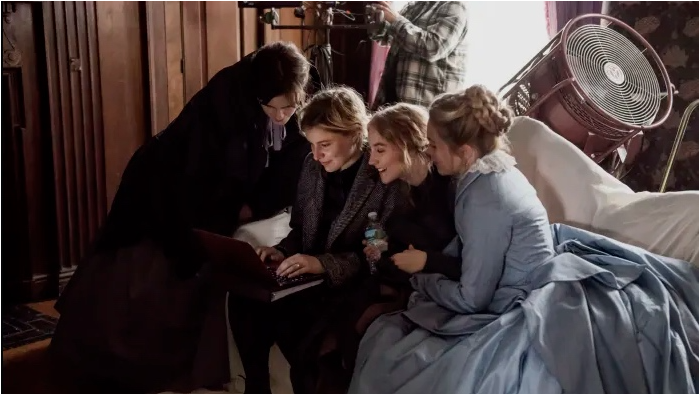
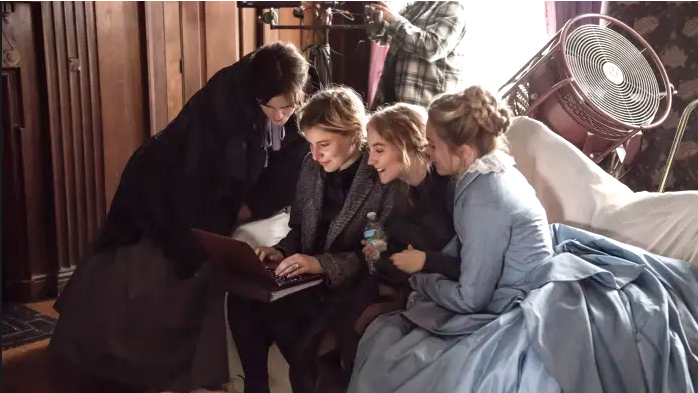






 Oliver Stone clearly suspected that there was a thin line between love and hate when he was casting for Natural Born Killers (1994). The self-flagellation of Rodney’s humour could be turned outward, at which point he would become a psychopath rather than a stand-up. This proved to be entirely the case. Ed Wilson, his character in the much underrated film, is Rodney to the max, unalleviated by nervous tics or the least indication that he may be domesticated to any degree. A masterclass in cartoonish, horrifying domestic sitcom parody, Rodney’s scenes as abusive, ogling, pawing, incestuous father to Juliette Lewis’s rebel girl Mallory are, despite the use of a sitcom laugh and applause track throughout, appalling yet exhilarating because somehow soon the slavering beast will be neutralised and his comeuppance will be as lurid as his fatherly behaviour is beyond the pale.
Oliver Stone clearly suspected that there was a thin line between love and hate when he was casting for Natural Born Killers (1994). The self-flagellation of Rodney’s humour could be turned outward, at which point he would become a psychopath rather than a stand-up. This proved to be entirely the case. Ed Wilson, his character in the much underrated film, is Rodney to the max, unalleviated by nervous tics or the least indication that he may be domesticated to any degree. A masterclass in cartoonish, horrifying domestic sitcom parody, Rodney’s scenes as abusive, ogling, pawing, incestuous father to Juliette Lewis’s rebel girl Mallory are, despite the use of a sitcom laugh and applause track throughout, appalling yet exhilarating because somehow soon the slavering beast will be neutralised and his comeuppance will be as lurid as his fatherly behaviour is beyond the pale.
 The first hour of the film is incongruously experimental for a Warner Brothers product, both formally and in the nihilism of its moral instruction. It is pitched as a satire that will address the enthusiastic attention paid to celebrity killers but is so extravagant and poetic in its means that it becomes, in the same breath, an irresistible paean to unfettered recreational slaughter. The first 15 minutes do not so much test as erase the contours of sitcom convention, setting free an ordinarily muffled content that celebrates, within the frame of a passionate romance between two attractive and murderous young people with a lot in common, the amputation of sociality that we are encouraged to believe is one of the great privileges of dedicated coupledom.
The first hour of the film is incongruously experimental for a Warner Brothers product, both formally and in the nihilism of its moral instruction. It is pitched as a satire that will address the enthusiastic attention paid to celebrity killers but is so extravagant and poetic in its means that it becomes, in the same breath, an irresistible paean to unfettered recreational slaughter. The first 15 minutes do not so much test as erase the contours of sitcom convention, setting free an ordinarily muffled content that celebrates, within the frame of a passionate romance between two attractive and murderous young people with a lot in common, the amputation of sociality that we are encouraged to believe is one of the great privileges of dedicated coupledom.